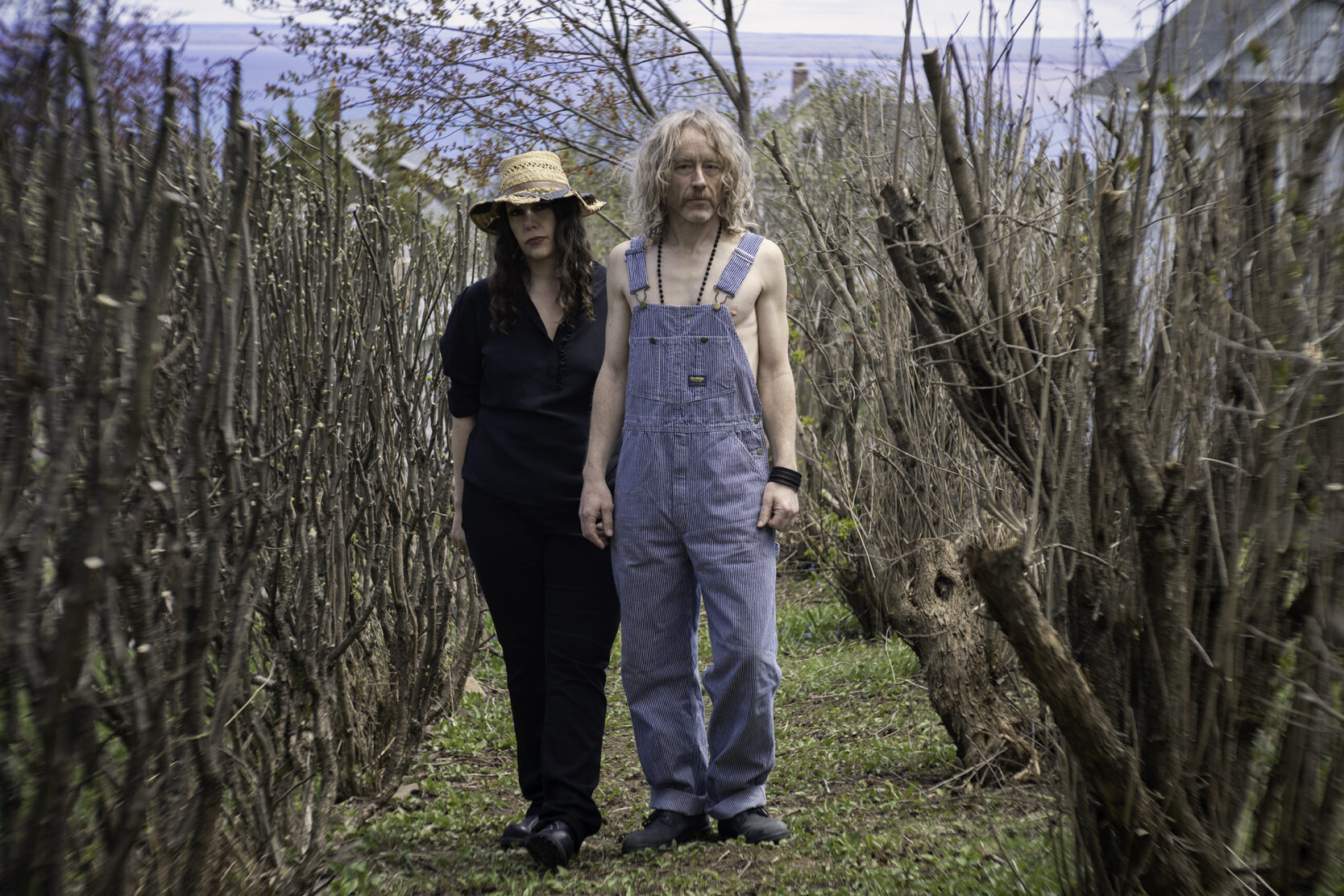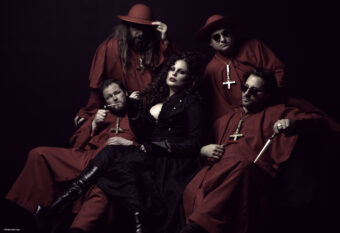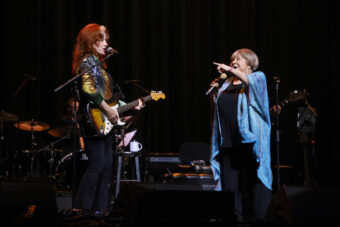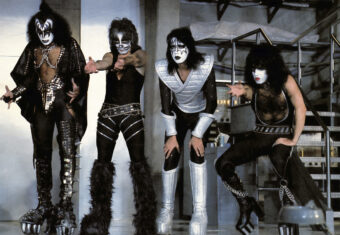Low has been doing this for a long time. The now-duo of drummer-vocalist Mimi Parker and guitarist-vocalist Alan Sparhawk has been making music since the ‘90s, and they have 13 studio records under their belt, as well as various EPs, one-off singles, and live albums. Many artists have formed and disbanded in the time that Low has been making music, and Sparhawk considers himself lucky.
“It took a long time to get there,” Sparhawk explains to SPIN over Zoom. “I feel lucky that we’re still doing it.”
Their 13th album, Hey What, furthers the trajectory initially laid out on 2015’s Ones and Sixes. It marks their third consecutive album working with prominent indie producer BJ Burton, who has contributed to Low’s stylistic plunge into digitally altered soundscapes. Whereas the group’s earlier output adhered to a traditional guitar-drums-bass instrumentation, their more recent oeuvre has delved deep into synthesizers and heavy distortion.
Hey What opens with “White Horses,” a song that introduces itself with a wash of pitch-shifted noise before solidifying into staccato synth clicks. Eventually, Sparhawk and Parker submerge their vocals in a cacophonous barrage of fuzz. It’s a voyage that would sound out of place on I Could Live in Hope or Things We Lost in the Fire but completely at home on Double Negative and, of course, Hey What. But the connective tissue that ties Low’s past and present has always been their idiosyncratic vocal harmonies.
“It’s nice to know that we’re consistent on something in life,” Parker quips. When people ask her what gives Low their signature sound, she invariably replies “Well, the vocals. No matter what we throw them on top of, the vocals keep it what it is.”
Even though Low has adopted a new sonic approach for their records, many of the sounds are difficult to replicate in a live environment. If Sparhawk and Parker were to duplicate some of their songs for shows, they’d “be up there with laptops and staring at screens and grids, and nobody wants to watch that,” according to Sparhawk.
For concerts, Low has always performed with guitar, bass guitar, and drums. They’ve also used this set-up for their “It’s Friday, I’m in Low” livestreams on Instagram. Low’s songs begin on a guitar with vocals, transition into a full-fledged sonic palette, and then are adapted to a more traditional arrangement. This is something that longtime fans have come to expect since 2007’s Drums and Guns, and Low is aware of that.
From a thematic perspective, Hey What expands on the political strife explored on their last record, 2018’s Double Negative, but it’s imbued with less cynicism this time around. “Double Negative to me was a pretty dark recording, but maybe this one is emerging out of the darkness a little bit,” Parker muses. “Even though we are addressing some serious issues, I feel like there’s a hope for sure in Hey What.”
“Part of hope is accepting what is the moment,” Sparhawk adds. “You have to see exactly where you are to be able to honestly start using hope to move forward. I look forward to those moments where I realize I was wrong. I feel like it isn’t until the very, very end of the record that the head turns and goes, ‘OK, where was that light that I feel I saw the other day?’”





